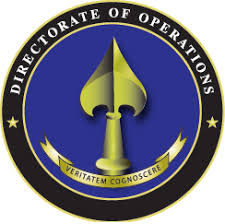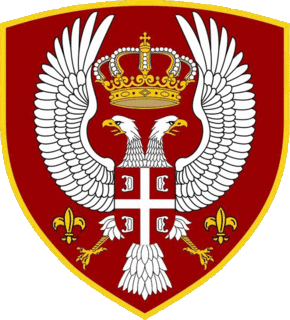
The Defense Intelligence Agency (DIA) is an intelligence agency of the United States federal government, specializing in defense and military intelligence.

Counterintelligence is an activity aimed at protecting an agency's intelligence program from an opposition's intelligence service. It includes gathering information and conducting activities to prevent espionage, sabotage, assassinations or other intelligence activities conducted for or on behalf of foreign powers, organizations or persons.

The General Directorate for External Security is France's foreign intelligence agency. Equivalent to the British MI6 and the American CIA, the DGSE safeguards French national security through intelligence gathering and conducting paramilitary and counterintelligence operations abroad, as well as economic espionage. It is headquartered in the 20th arrondissement of Paris.

The First Main Directorateof the Committee for State Security under the USSR council of ministers was the organization responsible for foreign operations and intelligence activities by providing for the training and management of covert agents, intelligence collection administration, and the acquisition of foreign and domestic political, scientific and technical intelligence for the Soviet Union. The First Chief Directorate was formed within the KGB directorate in 1954, and after the collapse of the Soviet Union became the Foreign Intelligence Service. The primary foreign intelligence service in Russia and the Soviet Union has been the GRU, a military intelligence organization and special operations force.
A security agency is a governmental organization which conducts intelligence activities for the internal security of a nation. They are the domestic cousins of foreign intelligence agencies, and typically conduct counterintelligence to thwart other countries' foreign intelligence efforts. For example, the United States Federal Bureau of Investigation (FBI) is the internal intelligence, security and law enforcement agency, while the Central Intelligence Agency (CIA) is an external intelligence service, which deals primarily with intelligence collection overseas. A similar relationship exists in Britain between MI5 and MI6.

The United States Naval Criminal Investigative Service (NCIS) is the primary law enforcement agency of the U.S. Department of the Navy. Its primary function is to investigate criminal activities involving the U.S. Navy and U.S. Marine Corps, though its broad mandate includes national security, counterintelligence, counter-terrorism, cyber warfare, and the protection of U.S. naval assets worldwide. NCIS is the successor organization to the former Naval Investigative Service (NIS), which was established by the Office of Naval Intelligence after the Second World War.
The MGB, an initialism for Ministerstvo gosudarstvennoy bezopasnosti SSSR, was the name of the Soviet state security apparatus dealing with internal and external security issues: secret police duties, foreign and domestic intelligence and counterintelligence, etc from 1946 to 1953.

The Directorate of Operations (DO), less formally called the Clandestine Service, is one of the smallest components of the US Central Intelligence Agency. It was known as the Directorate of Plans from 1951 to 1973; as the Directorate of Operations from 1973 to 2005; and as the National Clandestine Service (NCS) from 2005 to 2015.
The Bureau Central de Renseignements et d'Action, abbreviated BCRA, was the World War II-era forerunner of the SDECE, the French intelligence service. The BCRA was created by the Free French chief-of-staff in 1940, and it was first commanded by Major André Dewavrin, who had taken the nom de guerre, "Colonel Passy". De Gaulle set up his Free French intelligence system to combine both military and political roles, including covert operations. He selected journalist Pierre Brossolette (1903-44) to head the Bureau Central de Renseignements et d'Action (BCRA). The policy was reversed in 1943 by Emmanuel d'Astrier (1900-69), the interior minister, who insisted on civilian control of political intelligence.
National governments deal in both intelligence and military special operations functions that either should be completely secret, or simply cannot be linked to the sponsor. It is a continuing and unsolved question for governments whether clandestine intelligence collection and covert action should be under the same agency. The arguments for doing so include having centralized functions for monitoring covert action and clandestine HUMINT and making sure they do not conflict, as well as avoiding duplication in common services such as cover identity support, counterespionage, and secret communications. The arguments against doing so suggest that the management of the two activities takes a quite different mindset and skills, in part because clandestine collection almost always is on a slower timeline than covert action.
The Bangladesh Intelligence Community is a group of several intelligence agencies charged with carrying out intelligence-gathering activities considered necessary for the conduct of foreign relations and national security of Bangladesh including other functions vital for the national security of Bangladesh. Member organizations of the Bangladesh intelligence community include military intelligence of Bangladesh Army, Navy, Air Force, National Police and civilian intelligence and analysis offices within executive ministries. The I.C. is headed by a Director heading each Intelligence agency, who reports to the Prime Minister of the Bangladesh.The organisation and structure of the modern Bangladesh intelligence community has developed its structures from agencies that continued to function after Independence from Pakistan. Bangladesh intelligence agencies today are the National Security Intelligence, the Special Branch, Army Intelligence, Air Force Intelligence, Naval Intelligence and the Directorate General of Forces Intelligence (DGFI). During the 1971 Bangladesh Independence War, the Bangladesh Forces in the 11 BDF Sectors also developed an intelligence network within its organisation of guerrilla combat teams that provided the sectors with essential local intelligence. However, the intelligence agency personnel have been and still continues to be recruited and trained from within the particular agency. Among their varied responsibilities, the members of the Community collect and produce foreign and domestic intelligence, contribute to military planning, and perform espionage.

The CIA publishes organizational charts of its agency. Here are a few examples.

The Military Intelligence Agency is the military intelligence agency of the Ministry of Defence of Serbia. The Military Intelligence Agency is an expert and governing body of the intelligence of the Ministry of Defence of Serbia and makes an integral part of the security system of the Republic of Serbia. It is tasked with and responsible for providing information, as well as representing and protecting the interests of the Republic of Serbia abroad. It carries out its tasks through activities pertaining to military intelligence and military diplomacy.

The Military Security Agency is a Serbian military security and counterintelligence agency under the Ministry of Defence.
Rafael Ramón Acosta Arévalo was a Venezuelan military officer with the rank of corvette captain of the Armed Forces. Acosta Arévalo was victim of forced disappearance and tortured by agents of the General Directorate of Military Counterintelligence (DGCIM) during his detention after being accused by the government of Nicolás Maduro of "conspiring to carry out an attempted coup d'état". Acosta Arévalo died as a result of injuries suffered while in detention in the Military Hospital of the Army Dr. Vicente Salias Sanoja. The news of his death caused great impact in the media and the condemnation of both national and international authorities.
Iván Hernández Dala is the current head of Directorate General of Military Counterintelligence (DGCIM) and head of the Venezuelan Presidential Honor Guard.
Adriana Pichardo Bello is a Venezuelan politician. She is a deputy of the National Assembly, representing District 4 of Aragua state as a member of Popular Will. She is also part of the Citizenship and Human Rights commission of Mercosur.










